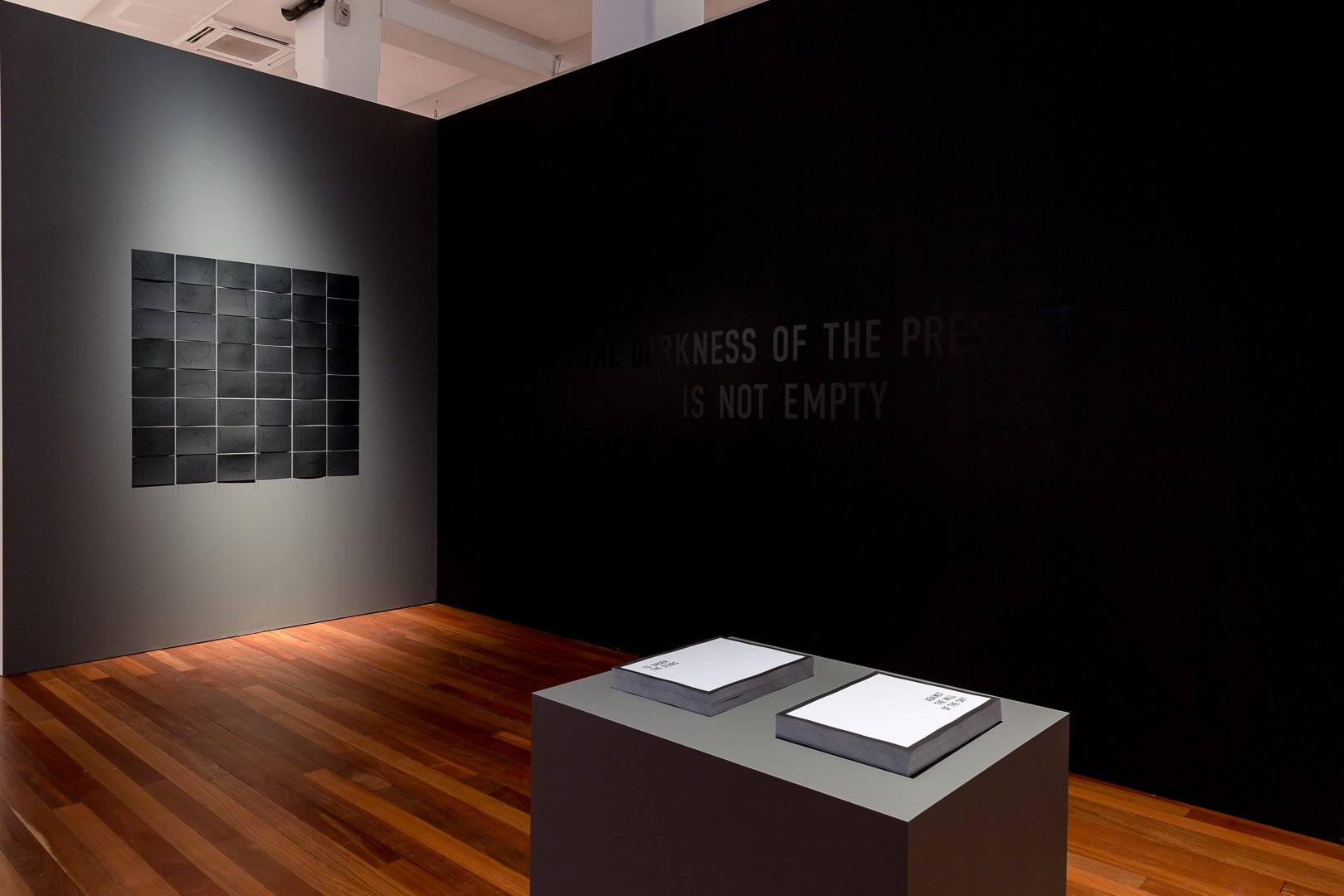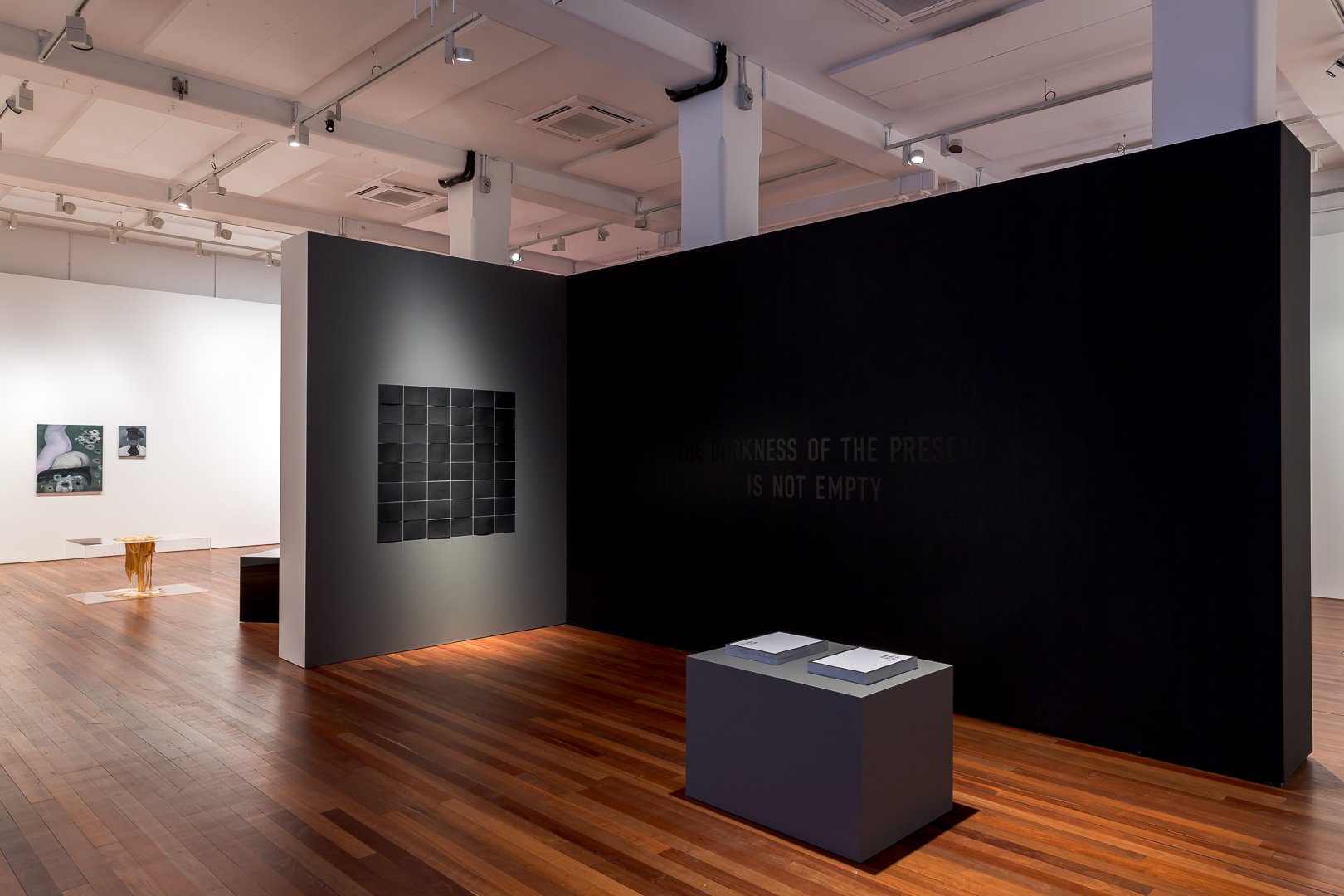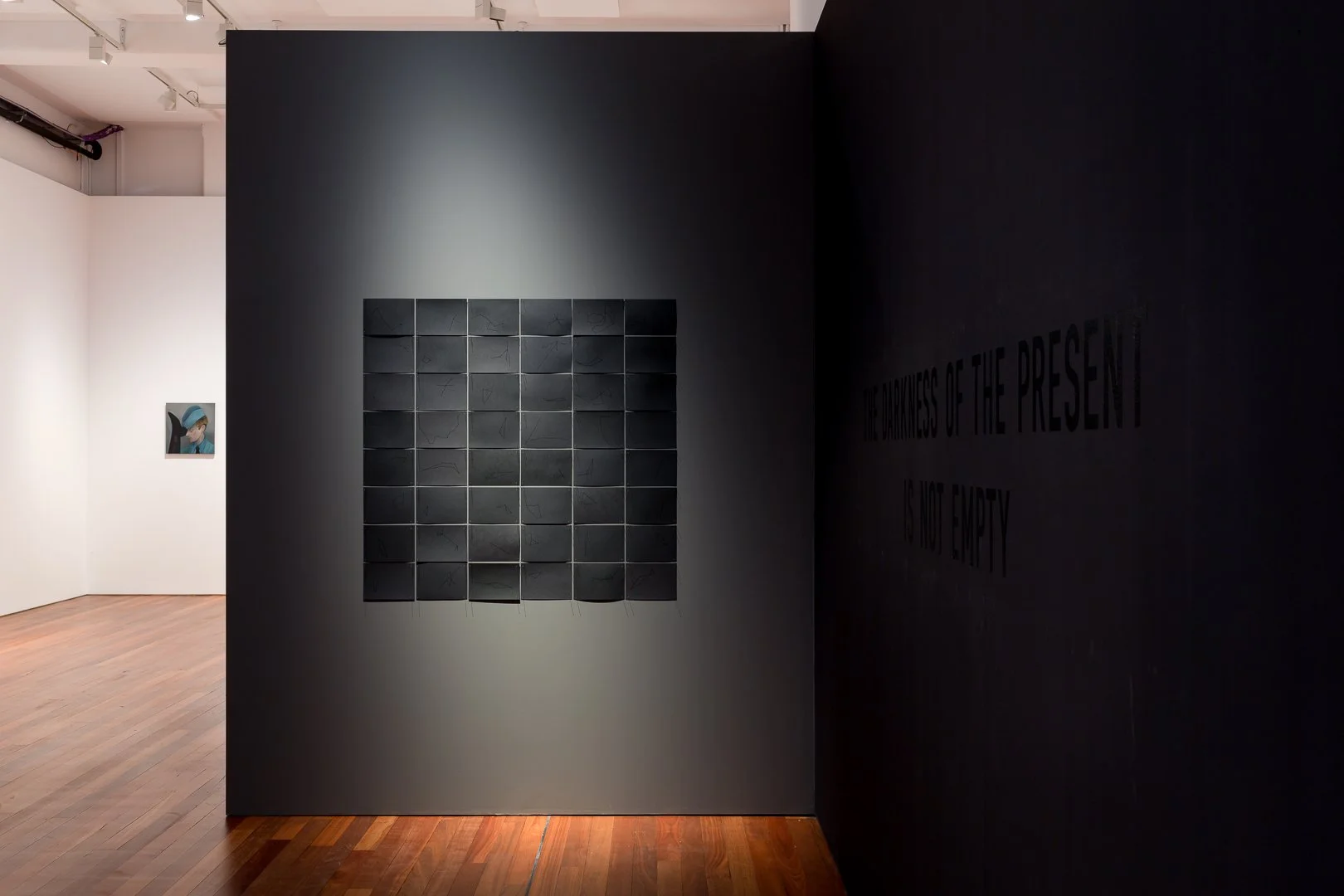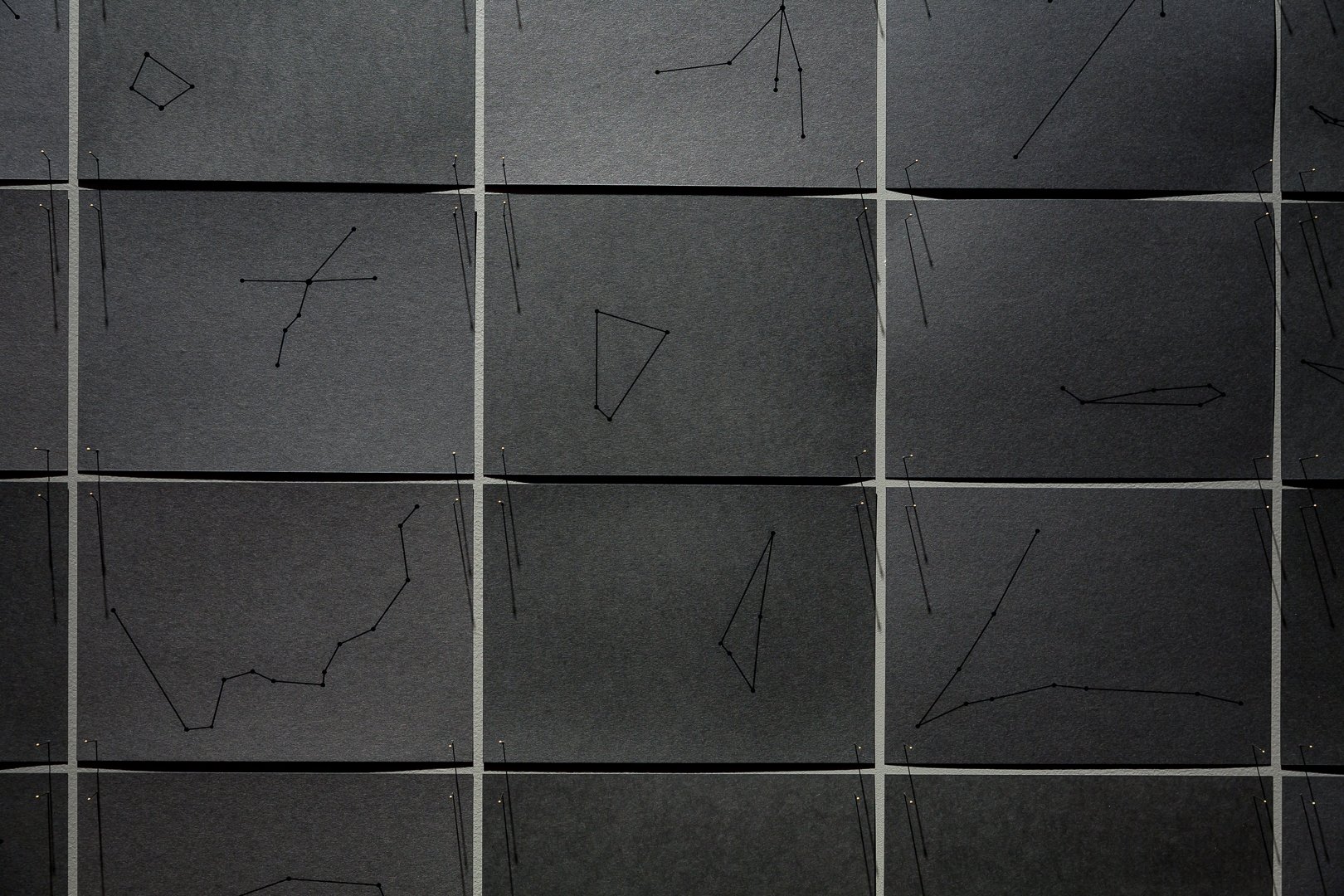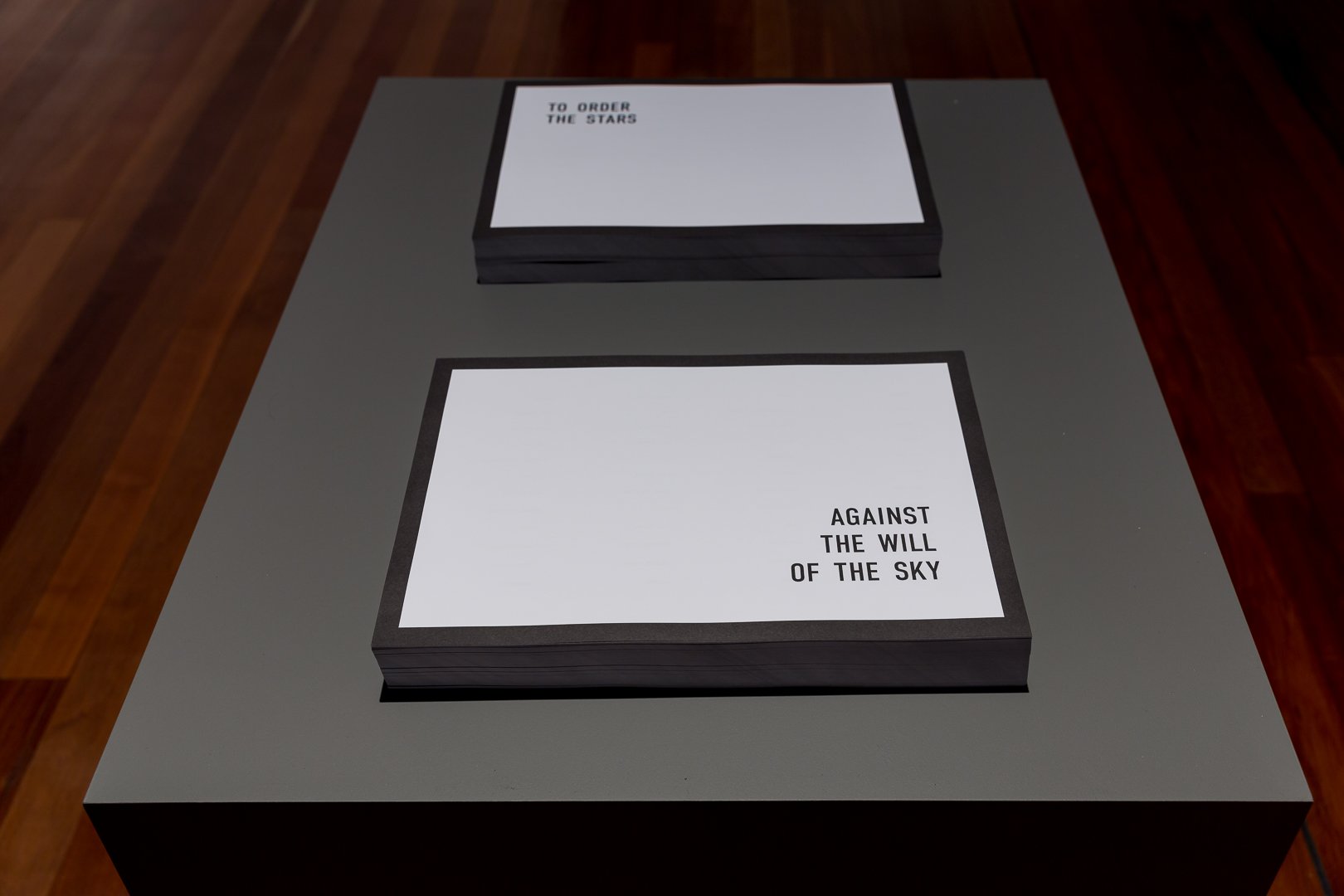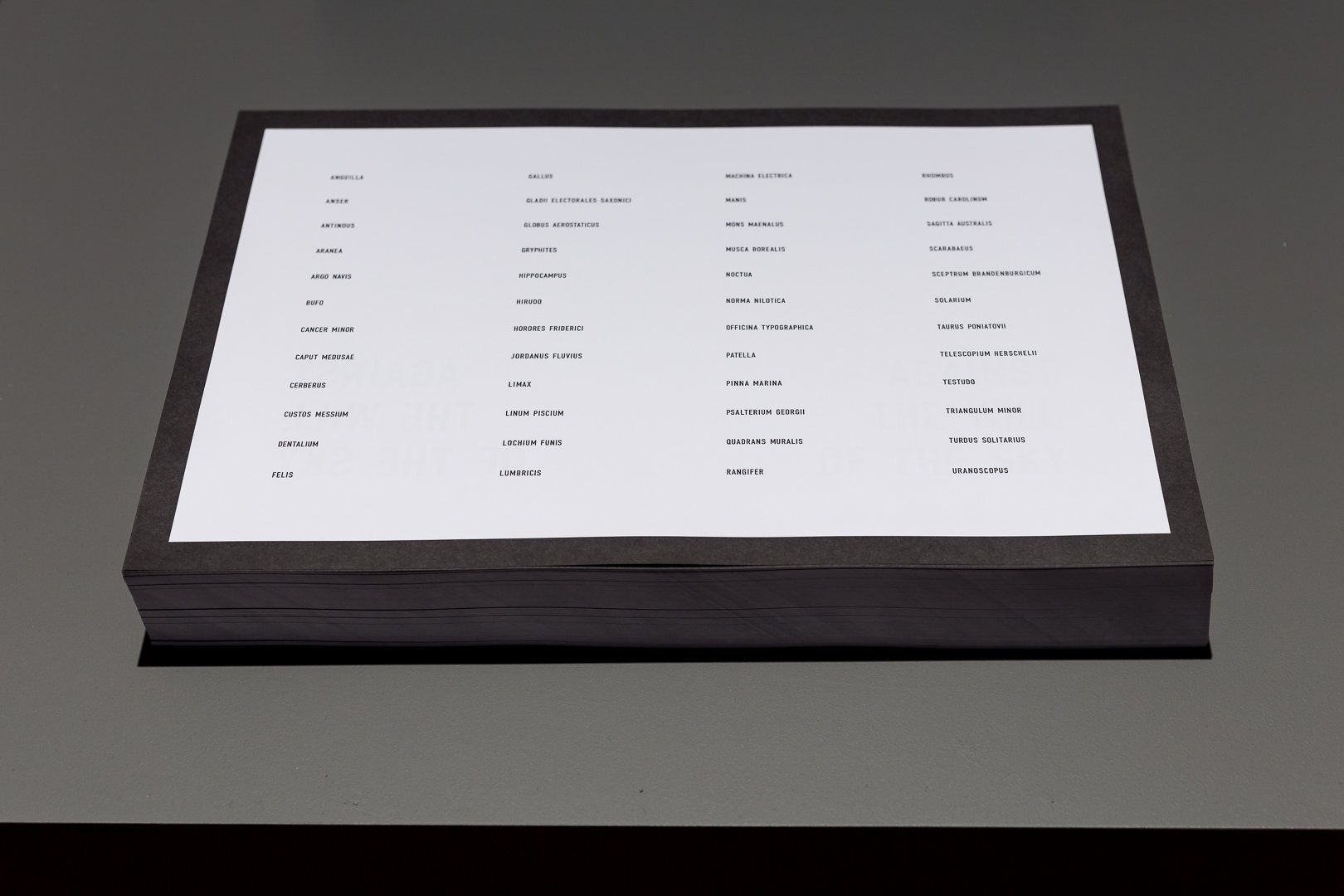THE DARKNESS OF THE PRESENT
2022
Dry transfer on card, acrylic paint on wall,
endless edition black and white print set
DIMENSIONS VARIABLE
If the stars — or the patterns of their constellation — correspond to our present, the darkness that surrounds them is not empty, but rather full of constellations that might no longer or not yet be there [...] The darkness of the present is not empty, but rather it carries within it the possibility of a different constellation, of a universe different from the one we know, or the presence of other planets still preserved by the darkness of time.
— Daniel Blanga-Gubbay
In 1925 Belgian astronomer Eugène Delporte became the arbiter of the night sky. Appointed by the International Astronomical Union (IAU), Delporte was granted sole authority to reconfigure the sets of stars commonly referred to as constellations. This process was considered an act of formal demarcation — an effort among the predominantly Western member states to construct more rigid ‘boundaries’ for celestial forms and ensure a common, internationally consistent language fit for scientific purpose. The outcome was the creation of eighty-eight officially sanctioned constellations –– an assembly of stars consolidated from centuries of stargazing that would neatly divide the astral realm.
This measure would however also produce a shadow class of constellations — a set of historical interstellar arrangements that did not correspond to this new system of order. Muted through redundancy, these now unclassified forms would effectively cease to exist —obscured from view yet continuing to illuminate the night sky (should one know where to look).
Archiving forty-eight such lost constellations, The Darkness of the Present considers the intransigent nature of systems and the perceived order that such systems provide. Questioning the politics of what is visible and why, it positions both image and text on the verge of disappearance — proposing that the dark and empty expanse that lies beyond us is neither a void nor a vacuum. Rather, it is an expression of our particular vantage point in history — a limited perspective that will inevitably flex and yield with the passage of time. Determined in a western geopolitical context, these constellations (both active and defunct) reveal how our vision is shaped by time, perspective, and systems of knowledge — systems that so often manifest at the expense or erasure of others.

